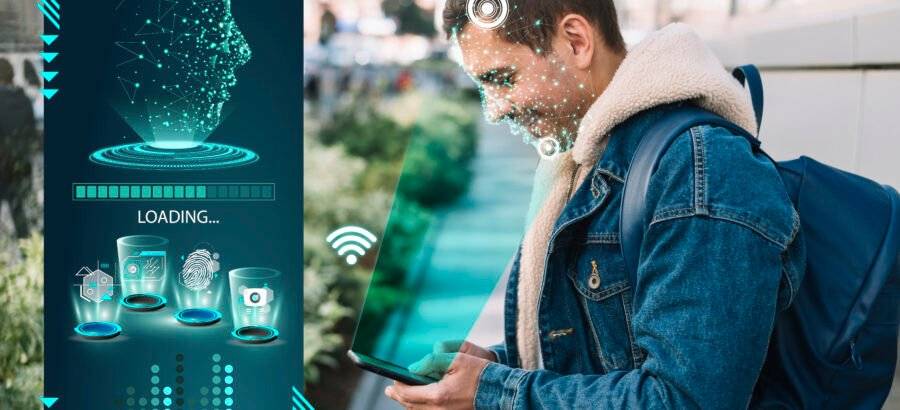While we can trace back digital twin technology in the year 2002, it remains that it’s at the early stages, and with the competitive nature between companies, that are ready to reap big, innovation seems to be moving fast with lots of it advancing.
High-stakes such as transportation and the manufacturing sectors, oil and gas, defense and aerospace are still capable of making investments around the digital modeling as well as for analytics, which are not expensive as compared to the total cost you’d use to set up and an entirely new jet engine.
The senior analyst of Internet of Things, Mr. Hughes, said that it’s essential always to know what’s going to happen; whether something is going to break, or even when something isn’t performing as expected. Mr. Hughes also added that there should be more accurate in putting everything together so that the process becomes interesting with the data, artificial intelligence as well as machine learning to see some improvements.
Digital twin, which Gartner describes as “the digital representation of a real-world entity or system,” is a little different from the 3D models; save-as version; which allows you to sandbox. Besides, digital twin technology helps in the collection of real or even near-time data from the Internet of Things sensors. Once you receive data, it is analyzed so that the products and systems can improve.
On the contrary, the 3D model helps in the capturing of an object’s geometry. But a digital twin is tasked with the function of incorporating the data from the sensors and “potentially physics engines also.” Additionally, a digital twin can help in a demonstration of how the discrete components can interact.
By June this year (2019), in a research done by Gartner, it was revealed that twenty-four percent of organizations with the Internet of Things technologies for production as well as Internet of Things projects that are in progress still value the use of digital twins. Besides, the research revealed that there would be another forty-two percent plan that will use the digital twin technology in three years to come. Gartner also said that their popularity would heavily depend on what digital twins will be able to do.
The digital twin approach can collect data from sensors and use it in predicting maintenance and optimization even though the physical meters and dials, where manufacturing information has been traditionally gleaned. This was a statement made by Scott Raynovich, who is also the principal analyst at Futuriom.
Out of a ton of practical industry scenarios, the most popular ones are aircraft engines, wind turbines as well as energy rigs. And while the Internet of Things continues to grow, the digital twin technology will be widely used across industries to give insights into existing operational activities, while also envisioning new opportunities as well as models.
Alexandra Rehak, a practice leader at the Ovum consulting, said that, with digital technology, you could be able to incorporate data from different systems. She also added that there’s a need to analyze the cost-benefit of deploying digital twin.
Most early cases can be found at the automotive design as well as the manufacturing, where there are intricate manufacturing phases and a complicated product that has undergone redesigning to have the new features as well as the technology.
For instance, you as an automotive manufacturer can come up with a digital twin for an automobile prototype, which you will use to test the design of the airbags or even test the steering systems through simulations. The digital twin can help you assess the changes that the product has undergone.
And if you didn’t know, twins can also be used to model the entire factory floor. This is done by separating the twins assigned to distinct operations like the movement of people, mechanical systems, as well as heating and cooling. Late last year (2018), Microsoft made the public aware of their Azure Digital Twins, which was a massive boost to their customers.
Also, the performance, as well as the safety of a product over its life cycle, are vital elements that shouldn’t be overlooked. Of late, there has been a lot of discussions going on about how digital twins can be used to monitor ongoing performance the moment a product has been released into the market.
Because the dots will always join up; bringing the border as well as the interconnected view to life, the real digital twin will be challenging to attain. A survey done revealed that in the next two to five years, companies will still be focused on phase one of digital transition; collecting data from the machines and making them usable.
Usually, they’ll give priority to plumbing, for the data, to help in the structuring in a better way. Unfortunately, there are no middleware and infrastructure to assist in doing that, but you should do it whatever the circumstances. From there, simulations can run, if at all the environmental models can elaborate the “what-now and the what-if” scenarios.
Engineers can rehearse for repairs, which requires to be turned off if they need to climb on top to get something. Back then, engineers could work with spreadsheets, plans; by using a blueprint of pipes as well as reading dials. But this implies you are taking live data and changing it into a 3D model. This is a proper fusion between what’s going on and CAD representation.
Likewise, Red Bull Racing has opted to train its drivers in giant video games as well as simulators. Because not every testing can be done using Formula One, the simulator is usually assumed to be a physical car, that’s actually not in use – a twist in the model. The simulator is used to exercise the physical device to determine if the heavy foot on the accelerator will interfere with the engine quicker. Once the technology is confirmed to be at a point, where reliance on instrumentation as well as the data are released from the devices, the digital twin will become a natural progression.
Always consider an architect because they always draw their buildings prior before using 3D and simulations. Usually, they will not risk building in the field only to get disappointed when the building finally falls over. Architects use a digital model for the running of things; so that they know precisely where the bits, as well as the wires, are located.







